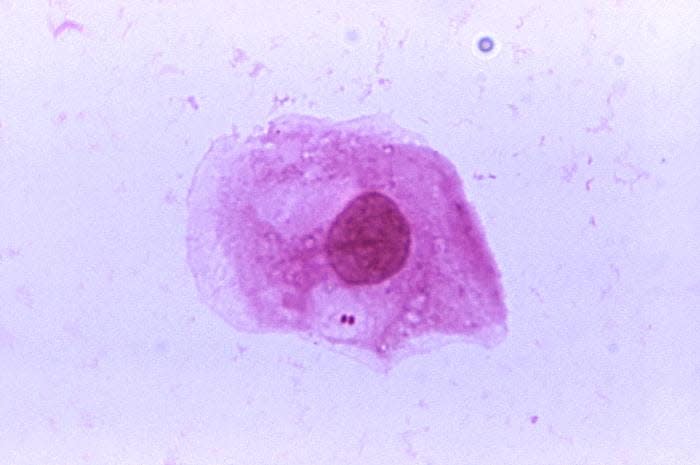CDC says bacterial infection cases are rising: What to know about meningococcal disease
The Centers for Disease Control and Prevention has issued an alert to health care providers about bacterial infections as a strain of the meningococcal disease begins to circulate within the United States.
Meningococcal disease is an illness caused by a bacteria called Neisseria meningitidis. While this illness can have severe symptoms, including death, a serious infection commonly called meningitis can form in the lining of the brain and spinal cord and bloodstream, according to the CDC.
In the alert, the CDC explained that a variant of the Neisseria meningitidis serogroup Y has reported 140 cases in 2024 so far. Although meningitis typically affects infants and young adults, this strand is targeting adults between the ages of 30 to 60 years old. People who are at a higher risk of getting this type of meningitis are Black and African Americans or someone who has HIV.

There are six types of meningitis serogroups that are known: A, B, C, W, X and Y. The four groups that are in the United States are B, C, W and Y, the CDC states.
Since 2014, the highest number of cases from type Y were reported in 2023 with 422 cases, according to the CDC.
In addition, the state of Virginia is currently dealing with a statewide outbreak from the meningococcal disease type Y. Since June 2022, "there have been 35 confirmed cases of meningococcal disease associated with this outbreak, including 6 deaths," according to the Virginia Department of Health.
This bacteria can kill young people: There's a new way to prevent it.
Types of meningococcal disease
There are two types of infections that can stem from meningococcal disease. They are meningococcal meningitis and meningococcal septicemia (aka meningococcemia), which is a bloodstream infection, according to the CDC.
Here are symptoms to look out for in both infections:
Symptoms of meningitis
Fever.
Headache.
Stiff neck.
Nausea.
Vomiting.
Photophobia.
Altered mental status.
Symptoms of meningococcal bloodstream infection
Cold hands and feet.
Diarrhea.
Fever and chills.
Fatigue.
Rapid breathing.
Severe aches and pains.
Vomiting.
In advanced stages of the infection, a dark purple rash may appear.
Ahjané Forbes is a reporter on the National Trending Team at USA TODAY. Ahjané covers breaking news, car recalls, crime, health, lottery and public policy stories. Email her at [email protected]. Follow her on Instagram, Threads and X @forbesfineest.
This article originally appeared on USA TODAY: Cases of bacterial infections are surging, CDC issues alert to doctors
